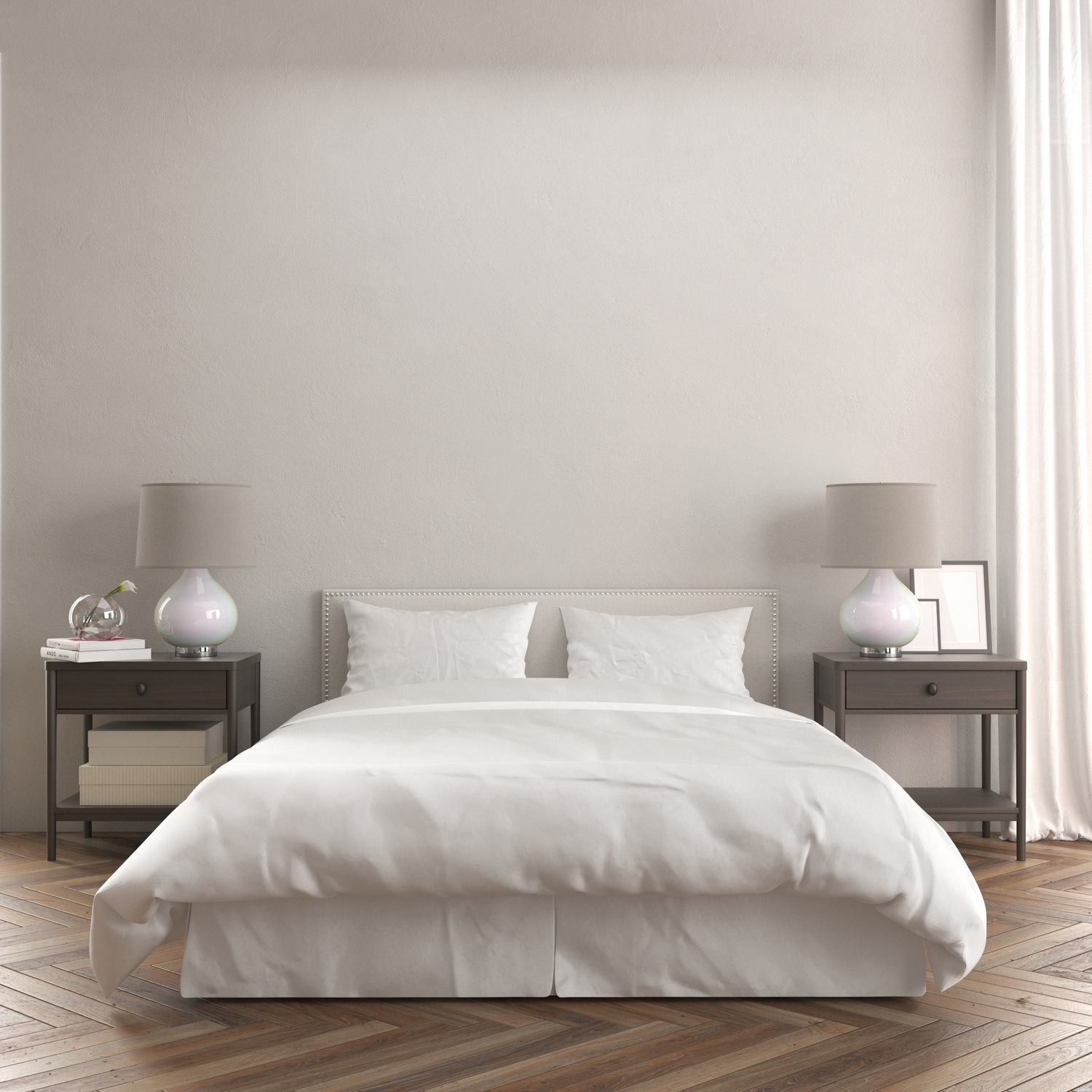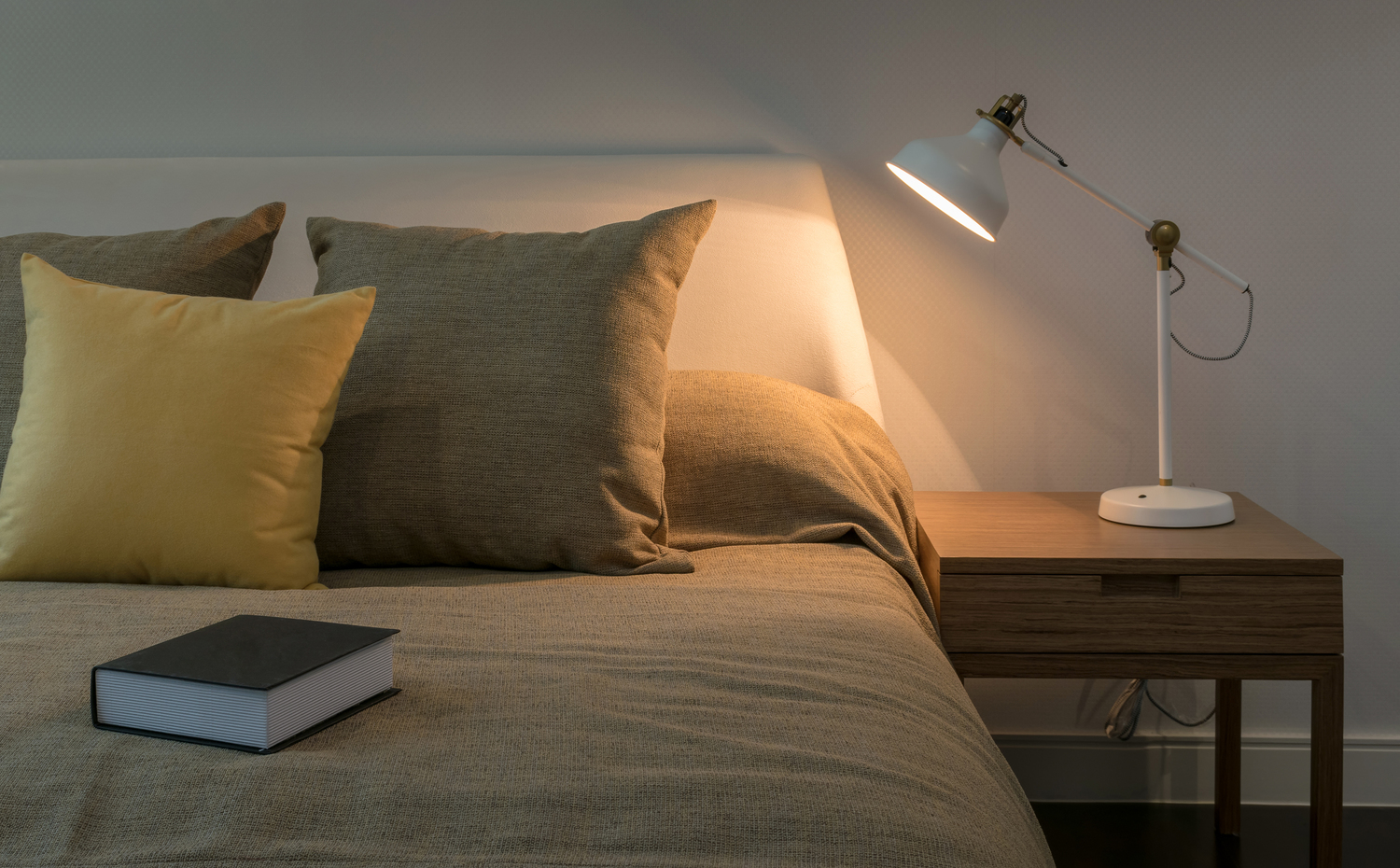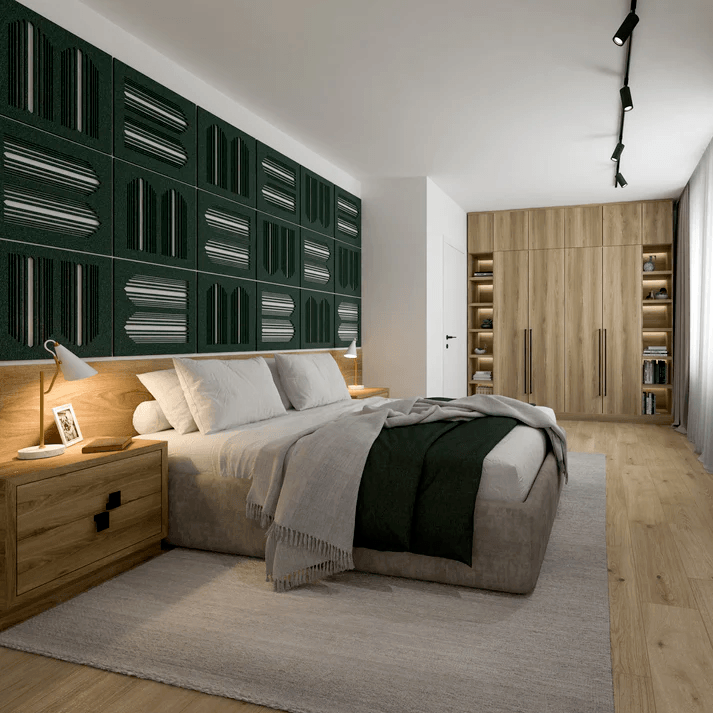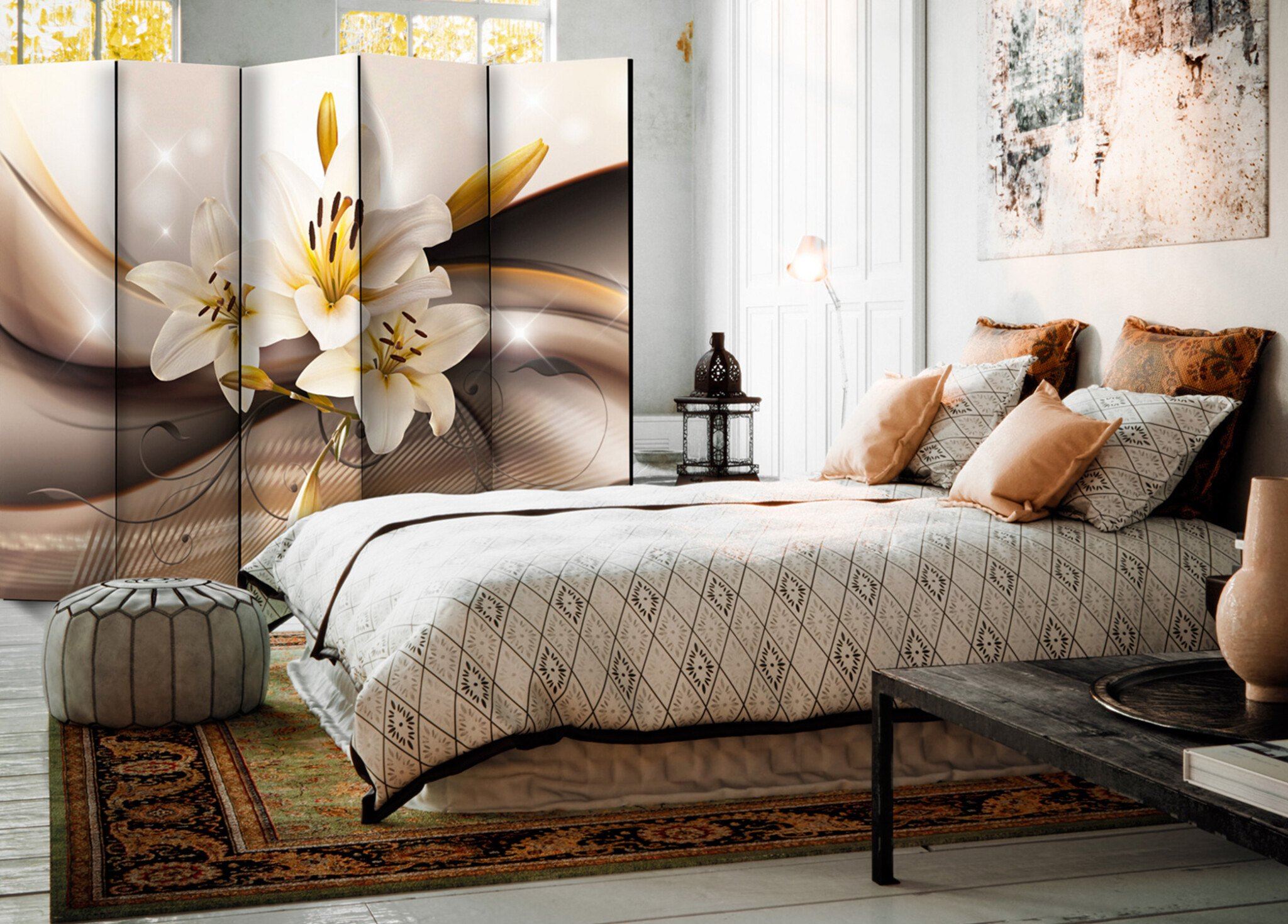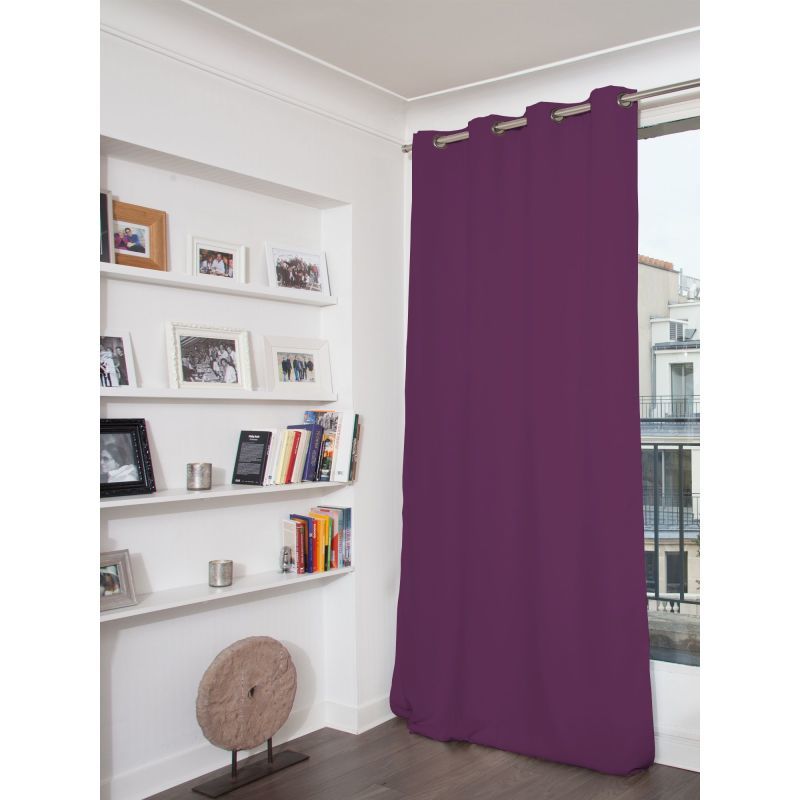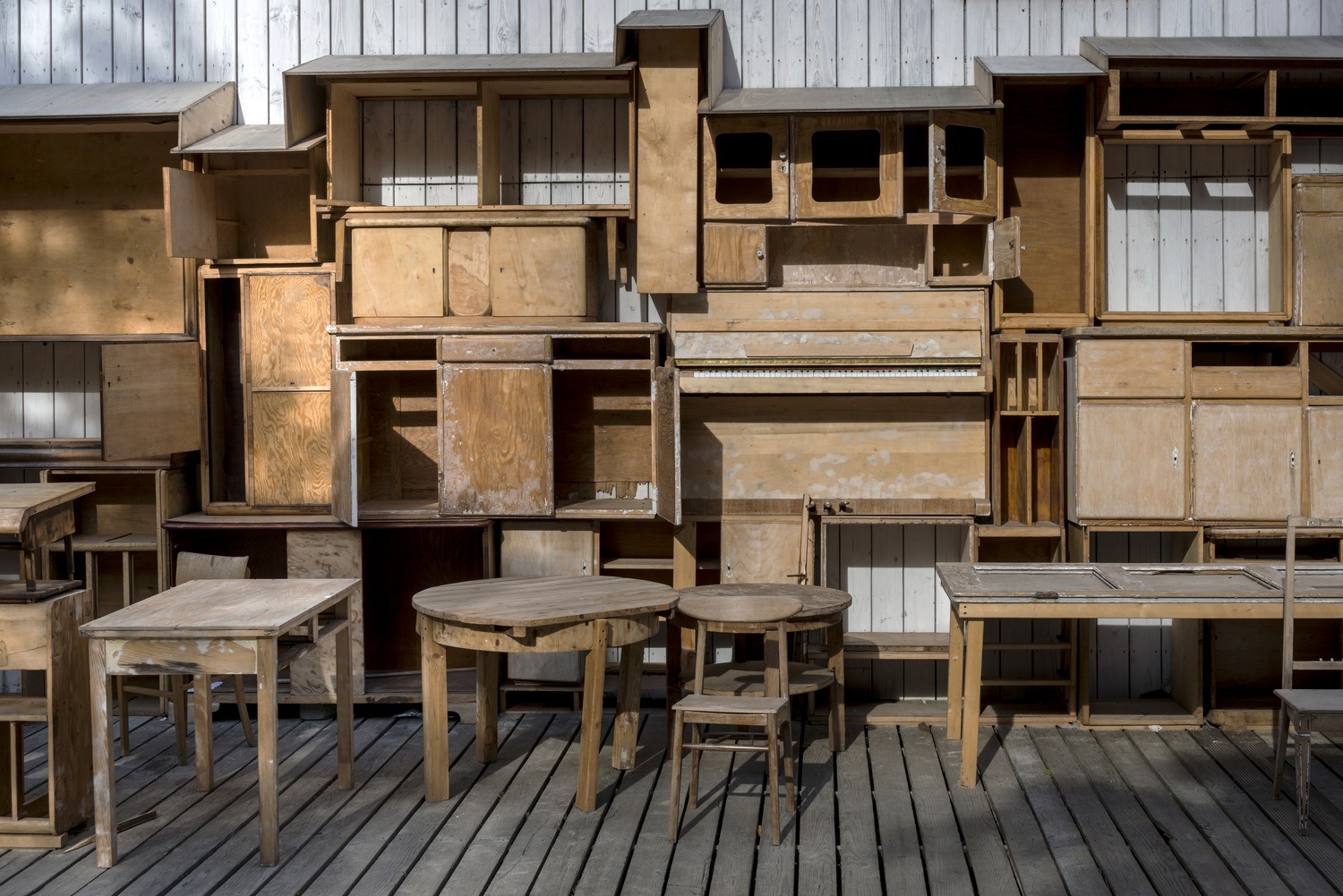The benefits of soundproofing and sound absorbing a bedroom
A bedroom should be a place for rest and relaxation, but noise from the surroundings or inside the room can disturb your sleep and affect your well-being. By soundproofing and sound-absorbing your bedroom, you can create a more peaceful and harmonious environment where you can relax more easily, sleep better, and reduce stress.
Reduce disturbing noises from outside for undisturbed sleep
External noises, such as traffic noise, neighbors, or other surrounding sounds, can make it difficult to fall asleep or cause repeated awakenings during the night. By using sound-absorbing materials, you can dampen these disturbances and create a quieter atmosphere. Soundproof windows, thick curtains, and acoustic panels on the walls can help block sound waves and reduce unwanted noise, making it easier to get undisturbed and deeper sleep.
Improve sound quality and reduce reverberation
Sound-absorbing materials can not only block outside noise, but also improve the acoustics of the room itself. If a bedroom has many hard surfaces, sound can bounce around and create reverberation, which can make even low sounds feel disturbing. By installing textiles, carpets, and sound absorbers, you can dampen sound reflections and create a more pleasant and balanced soundscape. This can be especially important if you like to listen to calm music, use a sound machine for sleep, or want to enjoy a movie or podcast without the sound being amplified in an unpleasant way.
Promote relaxation through a calm sound environment
Sound has a direct impact on our ability to relax. A quiet and soundproofed bedroom creates the right conditions for a calming atmosphere, which can help reduce stress and anxiety. Reducing noise is especially important for those who have difficulty winding down in the evening or who are sensitive to sound when trying to fall asleep. By using sound-absorbing measures, such as upholstered furniture, sound-insulating wall panels, and textile solutions, you can actively create an environment where the body and mind can more easily wind down and prepare for a good night's sleep.
Improved sleep quality through a quieter environment
Research shows that a calm and quiet environment is crucial for good sleep quality. Noise, even at low levels, can disrupt the natural sleep cycle and cause you to wake up more often or sleep more lightly. By reducing the noise level in your bedroom, you can create a more favorable environment for deeper and more restful sleep. Sound-absorbing curtains, acoustic panels, and soft materials can help keep noise levels down and provide better conditions for an uninterrupted night's sleep. This is especially important for shift workers, parents of young children, or people who live in urban environments where nighttime noise can be a recurring problem.
Reduce stress and protect your health from prolonged noise
Being exposed to high noise levels for long periods of time can lead to increased stress and negative health effects. Long-term exposure to noise has been linked to an increased risk of high blood pressure, cardiovascular disease, and chronic stress. By soundproofing your bedroom, you can reduce this impact and create a healthier indoor environment that promotes recovery and well-being. Investing in sound insulation and sound-absorbing materials is therefore not only a matter of comfort but also a long-term investment in your health.
A calmer working environment for those who work from home
If you use your bedroom as a workplace, for example as a home office or study, sound-absorbing materials can help create a quieter and more focused working environment. By reducing background noise and improving acoustics, you can reduce distractions and increase productivity. Especially in smaller homes or in homes where several people work or study at the same time, soundproofing measures can make a big difference to concentration and peace and quiet.
Adapt the acoustics to your needs
A soundproofed bedroom can also be adapted to specific needs and preferences. By using different types of sound-absorbing materials, you can create an optimal sound environment for your lifestyle. If you want an extra quiet environment, you can use soundproof doors, thicker wall absorbers, and sound-absorbing flooring. If, on the other hand, you want a more balanced sound, for example, for listening to music or watching movies, you can combine soundproofing with strategically placed sound-absorbing panels to optimize the acoustics.
Better communication and less background noise
If you share a bedroom with a partner, soundproofing can also contribute to better communication by reducing background noise. By using sound-absorbing materials, you can avoid sounds from movement, conversation, or snoring being amplified in the room, creating a more harmonious and comfortable sleeping environment.
Energy savings through sound-absorbing materials
Many sound-absorbing materials also have heat-insulating properties, which can contribute to a better indoor temperature and lower energy consumption. By using thick curtains, carpets, and sound-insulating wall panels, you can retain heat in the room during winter and keep it cooler during summer. This can lead to reduced heating and cooling costs, while creating a more comfortable environment all year round.
Create a harmonious and balanced atmosphere
By implementing sound-absorbing strategies in the bedroom, you can create a more harmonious and relaxing atmosphere. Soundproofing not only contributes to better sleep and reduced stress, but can also make the room more inviting and pleasant. By combining aesthetics and functionality with sound-absorbing materials, you can create a bedroom that is both stylish and comfortable to be in, whether it is for rest, work, or relaxation.





